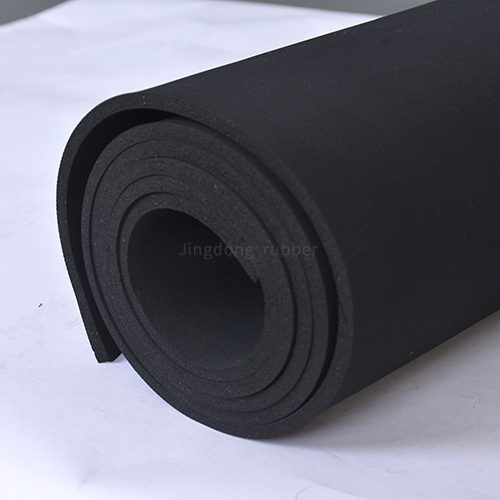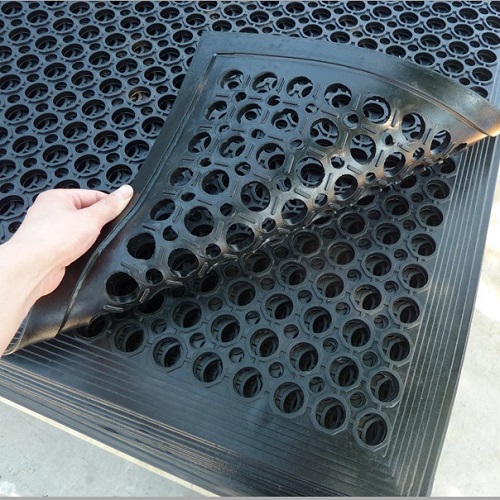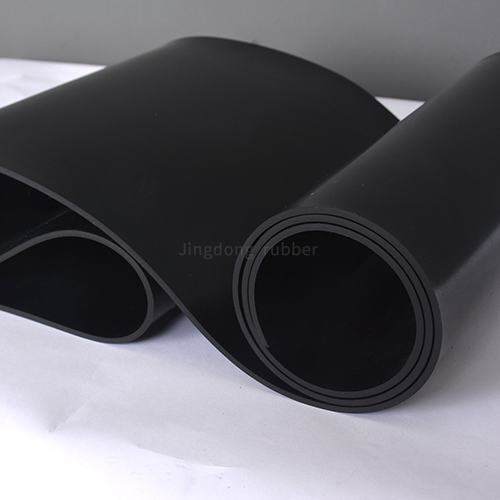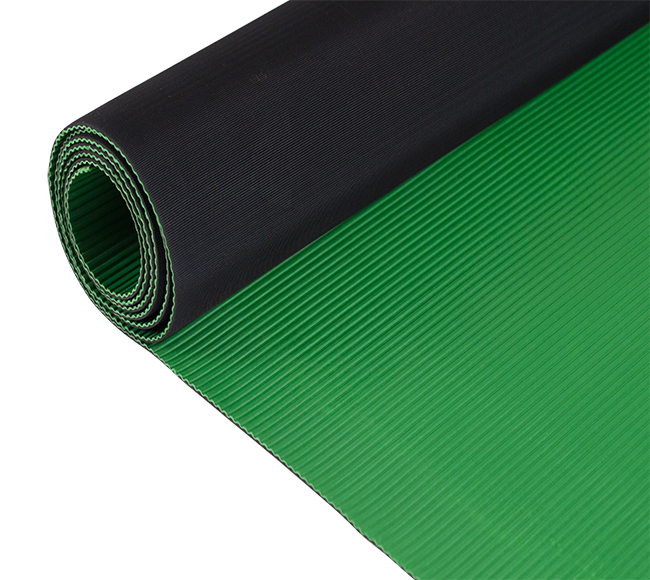Flame-resistant Silicone Rubber Sheet
In demanding industrial environments where safety and reliability are non-negotiable, the selection of appropriate materials is paramount. Flame-resistant silicone rubber sheet stands out as a critical component, offering a unique combination of thermal stability, electrical insulation, and inherent fire-retardant properties. This material is engineered to resist ignition, prevent the spread of flame, and self-extinguish, making it an indispensable solution for applications where fire hazards are a primary concern. Its versatility and robust performance profile make it a preferred choice across numerous high-risk sectors.
What is Flame-resistant Silicone Rubber Sheet?
Flame-resistant silicone rubber sheet is a specially formulated elastomeric material designed to inhibit combustion and limit the propagation of fire. Unlike standard silicone rubber, which may burn under extreme conditions, this variant is compounded with additives that enhance its ability to withstand direct exposure to flames and high temperatures. When subjected to a fire source, it typically forms a protective char layer that insulates the underlying material, reduces the release of flammable gases, and ultimately self-extinguishes once the ignition source is removed. This fundamental characteristic is crucial for enhancing overall system safety and protecting both equipment and personnel.
Key Material Properties and Specifications
The effectiveness of flame-resistant silicone rubber sheet is defined by its core material properties. These specifications are critical for engineers and procurement specialists to verify compatibility with their specific application requirements.
- Base Polymer: High-grade Silicone (Polydimethylsiloxane or similar)
- Color: Typically red, but available in gray, black, and custom colors
- Density: 1.15 - 1.35 g/cm³
- Operating Temperature Range: -60°C to +250°C (Short-term peaks up to 300°C possible)
- Tensile Strength: 8 - 12 MPa
- Elongation at Break: 300% - 600%
- Hardness (Shore A): 40 to 80
- Flame Resistance Standards: Compliant with UL 94 V-0, ASTM E162, IEC 60695-11-10
- Dielectric Strength: 20 - 25 kV/mm
- Volume Resistivity: > 1.0 x 10^14 Ω·cm
Detailed Technical Parameter Tables
For precise engineering and design decisions, the following tables provide a granular view of the material's performance under various conditions.
Table 1: Physical and Mechanical Properties
| Property | Test Standard | Typical Value | Unit |
|---|---|---|---|
| Specific Gravity | ASTM D792 | 1.25 | g/cm³ |
| Tensile Strength | ASTM D412 | 10.0 | MPa |
| Elongation at Break | ASTM D412 | 450 | % |
| Hardness (Durometer) | ASTM D2240 | 60 | Shore A |
| Tear Strength (Die B) | ASTM D624 | 35 | kN/m |
| Compression Set (22 hrs @ 175°C) | ASTM D395 | 15 | % |
Table 2: Thermal and Flammability Properties
| Property | Test Standard | Typical Value | Unit / Rating |
|---|---|---|---|
| Continuous Service Temperature | - | -60 to +250 | °C |
| Flammability Rating | UL 94 | V-0 | - |
| Limiting Oxygen Index (LOI) | ASTM D2863 | > 30 | % |
| Thermal Conductivity | ASTM C518 | 0.20 | W/m·K |
| Heat Aging (70 hrs @ 250°C) - Change in Hardness | ASTM D573 | +5 | Points |
Table 3: Electrical Insulation Properties
| Property | Test Standard | Typical Value | Unit |
|---|---|---|---|
| Dielectric Strength | ASTM D149 | 22 | kV/mm |
| Volume Resistivity | ASTM D257 | 5.0 x 10^14 | Ω·cm |
| Dielectric Constant (@ 1 MHz) | ASTM D150 | 3.2 | - |
| Dissipation Factor (@ 1 MHz) | ASTM D150 | 0.002 | - |
Primary Applications and Industries
The unique property set of flame-resistant silicone rubber sheet makes it suitable for a wide array of critical applications.
- Aerospace: Gaskets and seals in engine compartments, electrical wire insulation, thermal barriers in cabin interiors.
- Automotive (Electric & Hybrid Vehicles): Battery pack seals, insulation for high-voltage cables, thermal management pads for power electronics.
- Rail Transport: Firewall seals, cable transit blocks, interior panel gaskets to meet stringent EN 45545 standards.
- Power Generation & Distribution: Insulating barriers in switchgear, gaskets for transformers, high-temperature seals in turbine systems.
- Electronics: Thermal interface pads for CPUs/GPUs, insulating spacers in power supplies, protective layers in consumer electronics.
- Industrial Machinery: Seals for high-temperature ovens and furnaces, protective covers for hot surfaces, gaskets in welding equipment.
Flame-resistant Silicone Rubber Sheet: Frequently Asked Questions (FAQ)
What does the UL 94 V-0 rating mean for a silicone rubber sheet?
The UL 94 V-0 rating is a plastics flammability standard issued by Underwriters Laboratories. For a material to achieve a V-0 rating, it must stop burning within 10 seconds after two separate applications of a test flame, with no flaming drips allowed that could ignite a cotton indicator placed below. A flame-resistant silicone rubber sheet with a UL 94 V-0 rating provides a high degree of confidence that it will not sustain a flame in a controlled fire scenario, making it suitable for demanding electrical and electronic applications where fire safety is critical.
How does flame-resistant silicone rubber differ from standard silicone rubber?
The primary difference lies in the formulation. Standard silicone rubber is inherently heat-resistant but can burn when exposed to a sufficient flame source. Flame-resistant silicone rubber is compounded with special fire-retardant additives, such as platinum-based catalysts or mineral fillers like aluminum trihydroxide (ATH). These additives work by either promoting the formation of a protective char layer that insulates the material or by releasing water vapor when heated, which dilutes flammable gases and cools the material, thereby preventing sustained combustion and causing it to self-extinguish.
What is the maximum continuous operating temperature for this material?
Flame-resistant silicone rubber sheet typically has a maximum continuous operating temperature of +250°C (+482°F). It can withstand short-term temperature excursions up to 300°C for limited periods without immediate failure. Prolonged exposure to temperatures at or above the upper limit will accelerate the material's aging process, leading to gradual hardening, loss of elasticity, and eventual degradation of physical properties. For applications involving sustained extreme heat, it is crucial to consult the specific manufacturer's data sheets.
Can flame-resistant silicone rubber sheet be die-cut or fabricated into custom shapes?
Yes, one of the significant advantages of flame-resistant silicone rubber sheet is its excellent manufacturability. It can be precision die-cut, punched, slit, or routed into complex two-dimensional shapes with tight tolerances. It can also be laminated, adhesive-backed, or molded into three-dimensional forms. The material's consistency and stability make it ideal for automated fabrication processes, allowing for the production of custom gaskets, seals, and insulation components tailored to specific design requirements.
Is this material resistant to oils, chemicals, and weathering?
Flame-resistant silicone rubber sheet exhibits good resistance to many environmental factors. It performs well against ozone, UV radiation, and moisture, making it suitable for both indoor and outdoor applications. However, its resistance to oils, solvents, and concentrated acids/bases is moderate. It can swell or degrade when exposed to non-polar solvents, hydrocarbons, and strong oxidizing agents. For applications involving specific chemical exposure, it is essential to review chemical compatibility charts or conduct immersion tests to ensure long-term performance.
Does the material contain halogens?
High-quality flame-resistant silicone rubber sheets are often formulated to be halogen-free. Traditional halogenated flame retardants can produce corrosive and toxic smoke when burned, which is undesirable in many electronic and enclosed-space applications. Many manufacturers now use non-halogenated, environmentally friendlier flame-retardant systems, such as hydrated mineral fillers, to achieve the necessary fire performance without the associated hazards of halogenated compounds. Always verify the material's composition with the supplier for applications with strict halogen-free requirements.
How should flame-resistant silicone rubber sheets be stored and handled?
To preserve the material's properties, it should be stored in a cool, dry, and dark environment, away from direct sunlight, heat sources, and ozone-generating equipment like electric motors. The ideal storage temperature is between 15°C and 25°C (59°F and 77°F) with relative humidity below 65%. Rolls or sheets should be stored flat or on a core to prevent permanent deformation or creasing. Avoid contact with sharp objects that could puncture or tear the material. Standard shop safety practices, including the use of gloves and safety glasses, are recommended during handling and fabrication.
- View as






